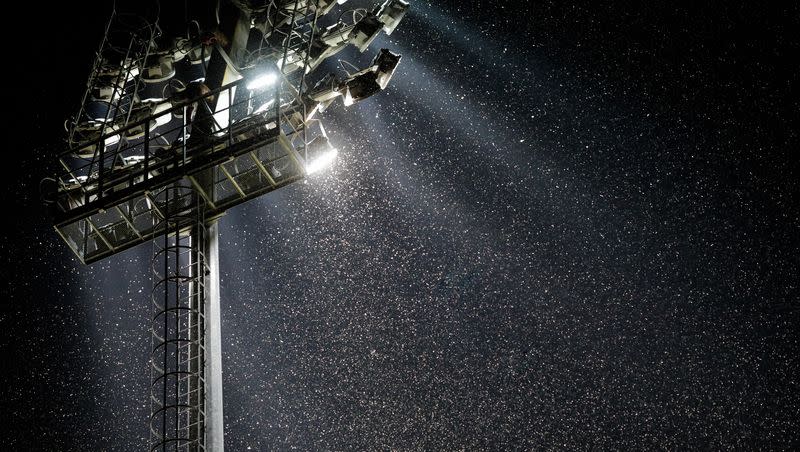Insects actually fly around your lights because they’re confused, new study says

It’s a familiar sight: bugs flying around the lamp posts, your kitchen light and anything else using a light bulb. It can be annoying — and scientists are wondering why it happens.
A new study published in the journal Nature Communications sought to get 3D flight data from insects, something that hasn’t been done before. And its findings might surprise you.
New study figures out why bugs fly around your lights
Before this study, science had to rely on theories such as lunar navigation, where it was believed insects used light from the moon and stars to navigate, according to Business Insider.
Smithsonian Magazine explains that this study expanded on lunar navigation, where insects will turn their backs to the sky where light is emanating, a method that helps them know which way is up and down.
The study’s team went to Costa Rica, where they used high-resolution cameras to film insects flying around artificial lights; they also attached motion sensors to certain insects back at the lab to create a “motion-capture” of their movements, according to The Associated Press.
A common misconception people have is that bugs fly around artificial light because they’re attracted to it. But according to the study, insects will turn their backs to the lights, believing it is a moon or star above them, thus confusing them and trapping them in a never-ending orbit.
What is the future between bugs and lights?
According to the study, some insects will turn upside down and crash-land in the presence of lights that beam up to the sky, according to AP.
Scientists hope that this research can help reduce the damage from light pollution, a human-made phenomenon that has had negative impacts on animals, humans and star visibility, according to Smithsonian Magazine.
People can start using lights that point straight down instead of up to reduce the number of insects flying to it, per Smithsonian Magazine. Professor Gareth Jones from the University of Bristol suggests using light bulbs that have shorter wavelengths, such as UV light, that are less attractive to bugs, per The Guardian.
Scientists hope that if we can change the way our artificial lights impact insects, it will improve their life cycles.
“Maybe they’re not finding mates the way they should. Maybe they’re not finding the food resources the way they should,” Peter Oboyski, executive director at the Essig Museum of Entomology, said to Business Insider.

